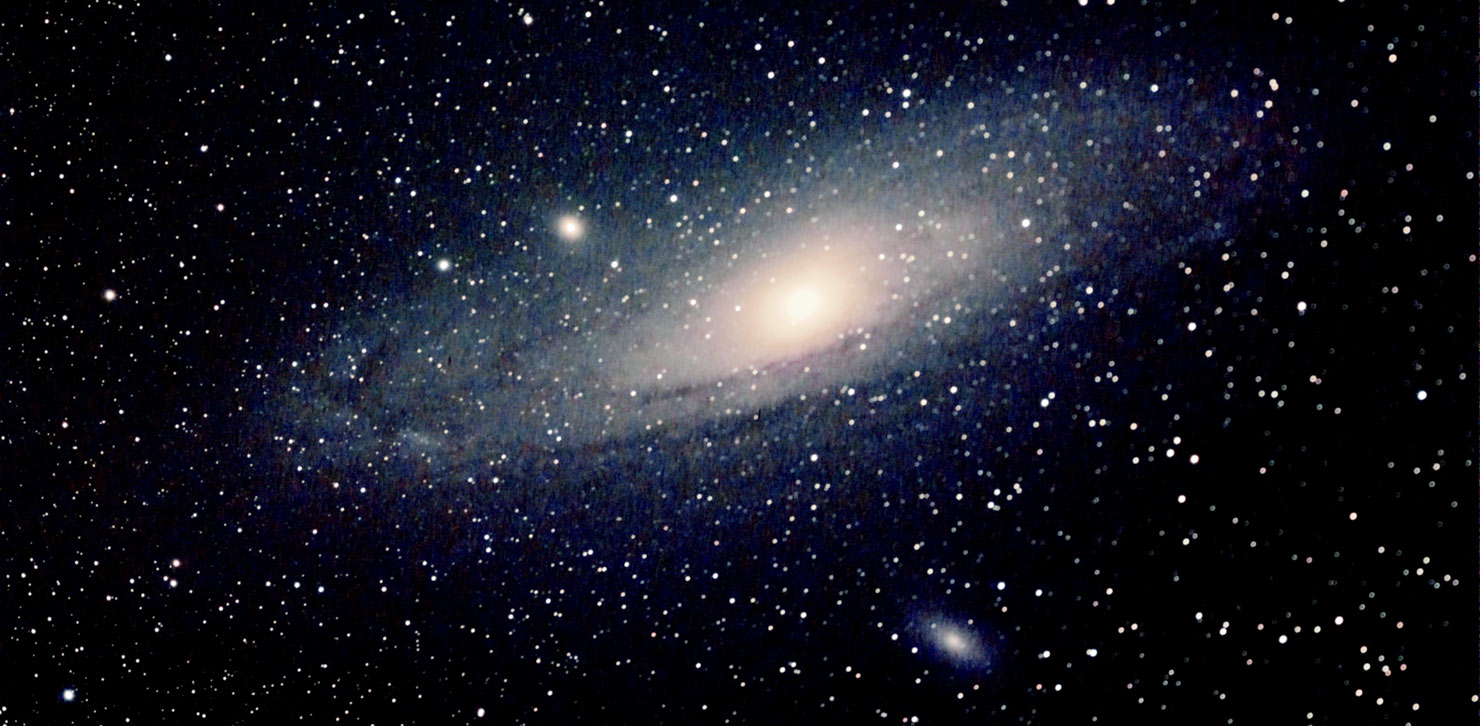
M31: The Great Galaxy in Andromeda
November 2014 :
Our eyes are truly amazing. Left alone, in a dark sky, we can look up and view an object two million light years away; that's a lot of empty space our vision is slogging through, but it's worth it to observe such an amazing sight: a giant Q-tip. However, resolved, it forms a galaxy, M31, similar in shape and size, if not larger, to our home Milky Way. It doesn't take much magnification to discern a distinct oval shape, complete with a brightening in the center - our massive neighbor's core. But, it takes a lot of resolution to realize what an incredible object this is.
First considered a diamond ring on the hand of Andromeda as she was being set up to be eaten - jewelry for all occasions - this puffball was originally classified with all similar-looking objects as seen through early, small telescopes: a nebula, a giant mass of dust and gas. But, then, in the 1920's Edwin Hubble photographed Cepheid variables, standard measuring stars throughout the Milky Way, using the 100-inch telescope at Mt. Wilson, the largest of its kind back then, which pushed M31 straight out of our own galaxy, giving it the distinction of being the first ever separate and distinct galaxy. With one set of photographs Hubble doubled the size of our universe.
One point of observing M31 that I've always found amazing is that yes, we are looking over 2.5 million light years back in time; but, this galaxy isn't just a flat surface. We are seeing it tilted at an angle of about 13 degrees. What that means for us is that, not only are we observing it very far away, but also 3-dimensionally, we are looking straight across to the other edge.
It's estimated that we, moving within our great Milky Way, will rendezvous with M31 in about a billion years or so. What type of impact will result? Theories range from not at all, as stars are far enough away from each other to pass directly through, to massive giant explosive realms as stars do clash. Either way, incredible star birth will occur, from the interactions of the two behemoths' massive amount of dust and gas. Sorry we won't be around when it happens.
When to Observe
Constellations
M31 image by Tom Thibault was taken with a Celestron Nightscape 8300 through an Astro-Tech 65mm telescope. This was a stack of 24 - 40 second exposures and processed with Photoshop.



